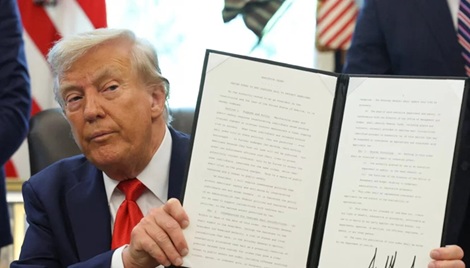(Preliminary Exam: Contemporary Issues)
(Main Exam, General Studies Paper- 2: Structure, Organization and Functions of Executive and Judiciary; Important Aspects of Governance, Transparency and Accountability) |
Reference
In the US, President Donald Trump has issued an executive order on cashless bail and has cited it as the reason for the increase in crime. On the other hand, researchers believe that there is no concrete evidence to support this claim. This debate is not limited to the US only, but in India too, bail and its related economic aspects have been in discussion for a long time.

About Cashless Bail
- What is it: Cashless bail is a system in which the accused does not have to deposit cash for bail, but the court releases him on certain conditions.
- Objective: Its objective is to ensure that the poor and weaker sections do not remain in jail only due to economic incapacity.
- It is generally used in crimes of small or low degree.
Recent Issues in the US
- The US already had a cash bail system in which the accused had to deposit a sum of money for bail.
- This system was discriminatory against the poor as economically weaker people remained in jail for years for not being able to deposit even a small amount.
- Cashless bail reform in the US came into the limelight after cases like Kalief Browder, in which a teenager spent three years in jail for not being able to pay a bail of just $3,000.
- The Trump administration has blamed cashless bail for increasing crime, while studies have found no direct evidence of this.
Perspective of Cashless Bail in India
- In India, the Indian Civil Security Code, 2023 (BNSS) sets the bail process.
- Indian courts sometimes release the accused on the basis of conditions only, i.e. Personal Recognizance Bond (PR Bond) i.e. without any cash amount.
- But in practice, cash or bail bond is often required.
- The poor and underprivileged are unable to afford this, due to which they remain in jail even after getting bail.
|
Important legal terms
- Bail: Bail is a legal process under which an accused is released from jail on certain conditions during the trial.
- Bond: Bond is a written assurance in which the accused promises that he will be present in the court and will cooperate in the trial proceedings.
- Bail Bond: Bail bond is a process in which the family or acquaintance of the accused gives financial guarantee that the accused will not run away from the trial proceedings. In this, usually a cash deposit or property guarantee is taken.
|
Bail related concerns
- The economically weaker sections remain in jail for years due to not being able to deposit even a small amount (eg. Rs 5,000).
- Overcrowding worsens the situation in prisons.
- The principle of equal access to justice is hampered as the rich can easily get bail while the poor remain in jail.
- The process of bail bond is complex and time-consuming, with hurdles such as verification and solvency certificate.
Need for reform
- Bail should be based on the conduct of the accused and the gravity of the crime, rather than being linked to financial status.
- The poor and underprivileged should be given more options of cashless bail or PR bonds.
- Jail superintendents and District Legal Services Authorities (DLSA) should actively look into cases where the accused are in jail despite getting bail.
- The 268th report of the Law Commission (2017) also stated that the current bail system is contrary to the spirit of the Constitution and reform is necessary.
Way forward
- Institutionalise cashless bail and make it accessible to the poor
- Simplification of bail procedures and use of digital tracking system
- Grant bail based primarily on the gravity of the crime and the background of the accused
- Strengthen legal awareness and legal aid services so that no person remains in jail only due to financial inability
Conclusion
Cashless bail is not just a judicial process but an issue related to equality, justice and human dignity. Strengthening this system in India is extremely important to ensure equal access to justice.


